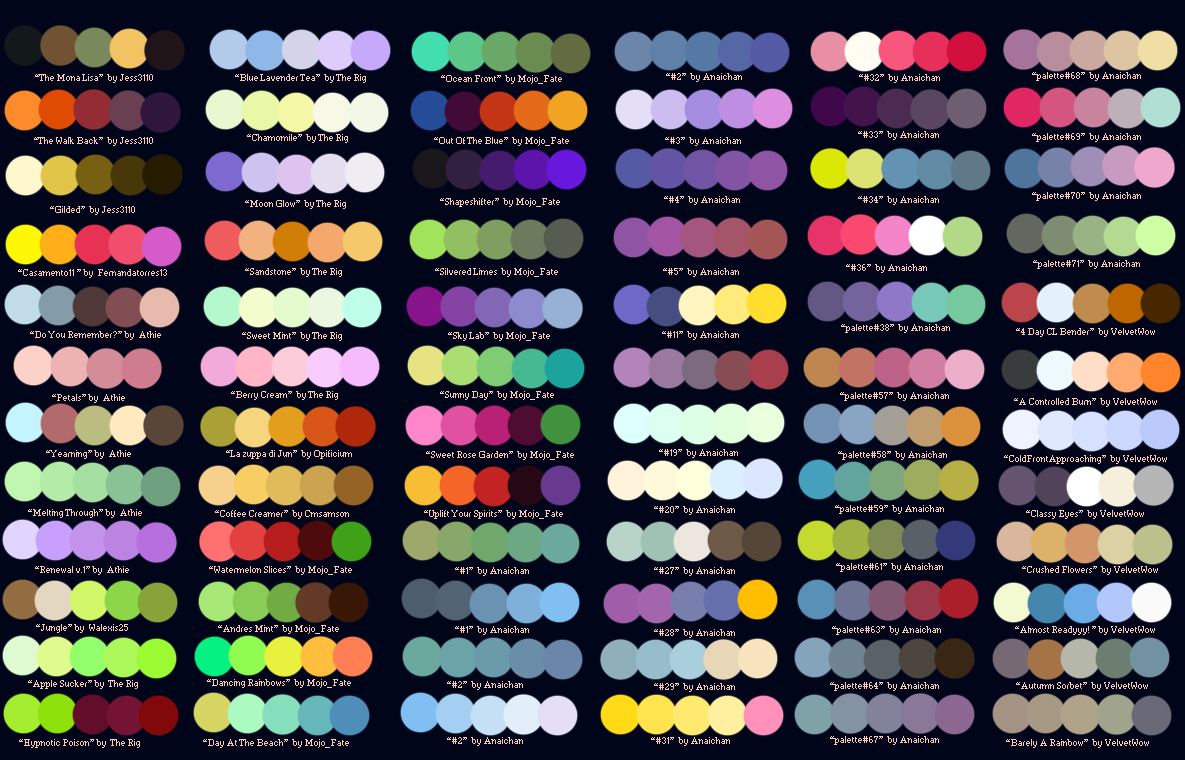
- #PHOTOSHOP COLOR PALETTE FROM IMAGE TUMBLR HOW TO#
- #PHOTOSHOP COLOR PALETTE FROM IMAGE TUMBLR SKIN#
- #PHOTOSHOP COLOR PALETTE FROM IMAGE TUMBLR PLUS#
To make a vector mask on your new layer, make sure the desired layer is selected, then press the white square icon with a grey circle in the middle shown at the bottom of the layers section. you can also paint these on by using a new layer ( layer>new>layer>change “mode” to color instead of normal>ok) and adding a vector mask to clean up the edges To make colors that “aren’t there”, i like to use the “neutrals” channel in selective color, decreasing whatever color i don’t want and increasing the ones that i do, and covering the rest of the gif in layer masks so they aren’t discolored. I used SC9 to brighten up the blues that were already in the gif, and SC10 to bring blues that weren’t really present before into the background on the left side. To make sure i was keeping the colors similar to what i wanted originally, i compare the colors that i’m making in selective color with the dots that i had made in the beginning.Īfter all of those layers, here’s what the reds looked like (without the dot layer)!Īfter the reds, i moved on to the blues, which only took 2 layers.

#PHOTOSHOP COLOR PALETTE FROM IMAGE TUMBLR SKIN#
the main advice that i have for this part is to decrease the colors that you don’t want, and increase the ones that you do (like decreasing cyans on a red layer), and to also use layer masks & mask feathering to make sure you’re not making skin tones (or anything you don’t want a specific color) too vibrant. SC layers 1 through 5 were used to bring the red up to the saturation point that i wanted to have it at for the whole gif, while layers 6 through 8 were just focusing on the top right corner. I did 8 (yes, EIGHT) selective color layers for the red alone in this gif, and i’ll list out what i did on every one: when i use selective color, i basically try to isolate the color that i want into 1 or 2 channels within the selective color layer, so things don’t get too muddy or anything. so for this one, that’s the red on her shirt, scrunchie and in the top right corner. To start, I usually do the accent colors first so they don’t get lost when i do the the main color. after i add the dots to the places i want, it looks like this (don’t worry, we will delete the dots at the end!):

i like to do smaller dots, so that i can see around them while i’m working. Now, using the paintbrush tool and the HEX codes of the colors you chose, add dots of your desired colors to any areas that you want to color match in the new layer that you just created. make sure it stays as the top layer, as you’ll be color matching to that layer throughout the process! it should look like this before you click ok:
#PHOTOSHOP COLOR PALETTE FROM IMAGE TUMBLR HOW TO#
Hello!! as you may know, i do a LOT of colorful gifs on this account, and i thought i’d share how exactly i make gifs with multiple vibrant colors in them (thanks to for the ask on how to do this new>layer>ok-you don’t have to change any of the settings for this layer).

stevesnailbat’s gif tutorials: color palettes/colorful gifs.In this photo, I've noticed that there are some nice charcoal grays and some lighter off-white grays that I can use for those neutrals.

This gives me a lot of flexibility and creates more interest in a piece than sticking with straight white or straight black. I also love to include neutrals in my palettes. So I know that I'll start by sampling a darker blue and a darker orange. In this example, the two main colors are blue and orange. I always like to create the top row of my palettes in darker shades, and then fill in the bottom with lighter shades of the same hues.
#PHOTOSHOP COLOR PALETTE FROM IMAGE TUMBLR PLUS#
Plus the photo includes some neutrals which are always great to include in your palettes.Īs you're looking at the reference photo, think through the different hues that you'll want to sample for the palette. Blue and orange are directly opposite each other on the color wheel, which tells me that this will make a beautiful and balanced color palette. This is a great example of a complementary color scheme.


 0 kommentar(er)
0 kommentar(er)
